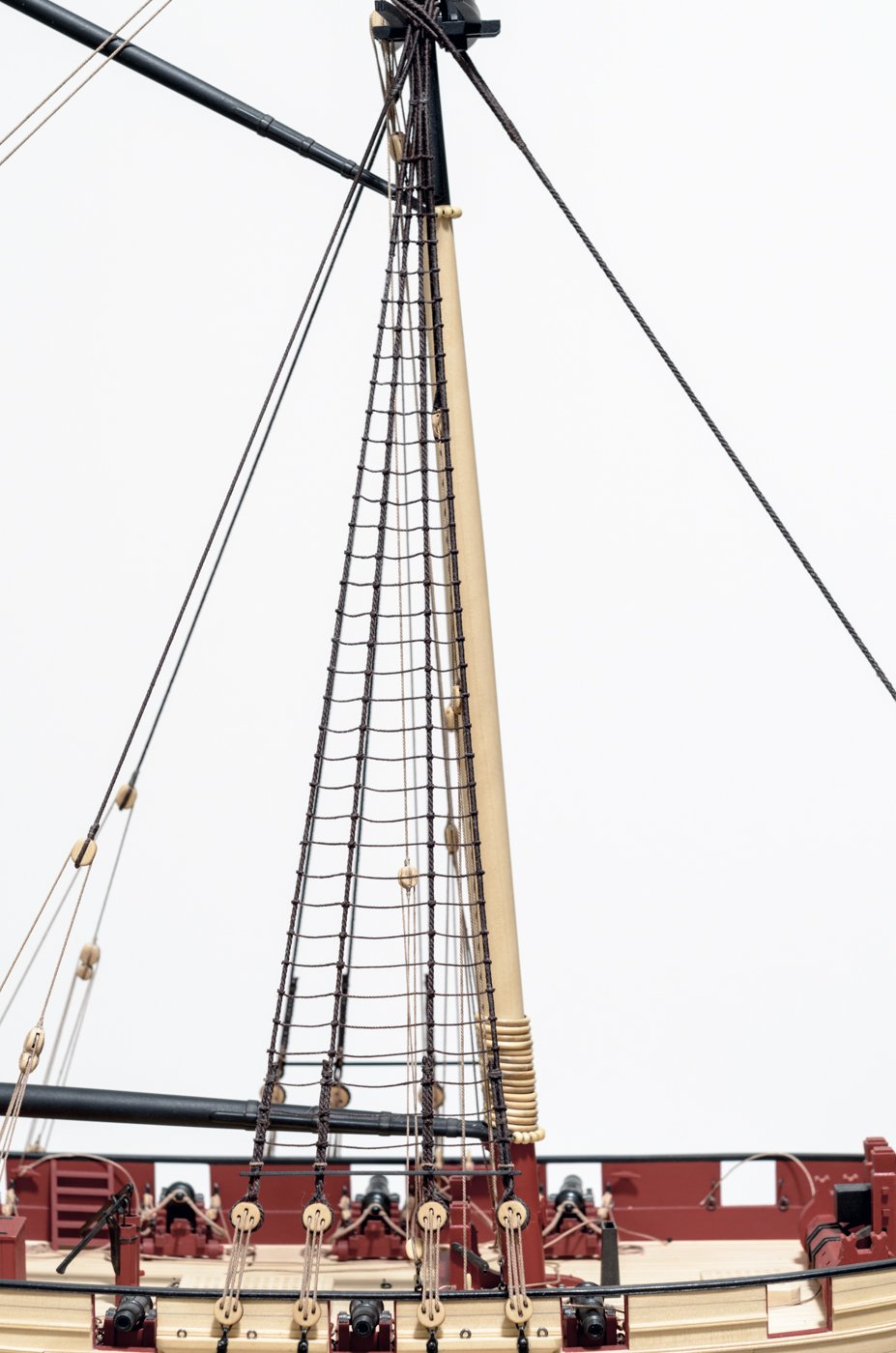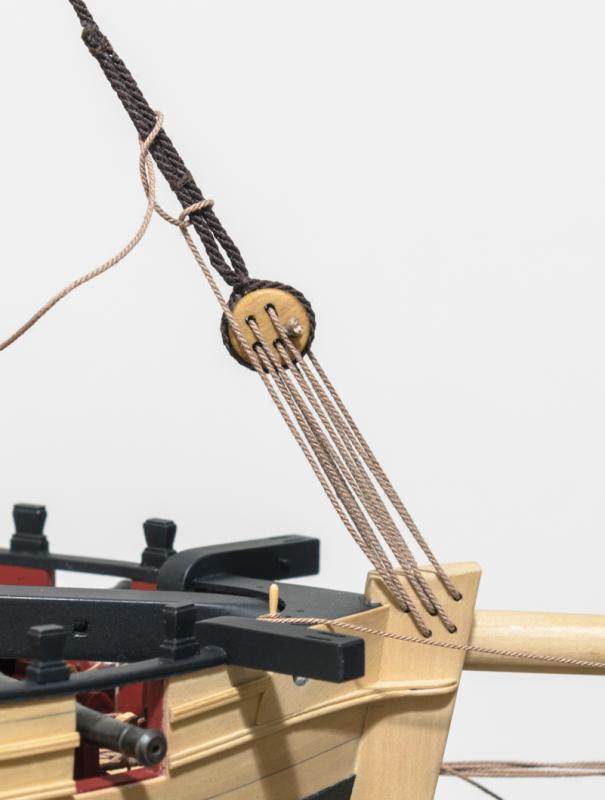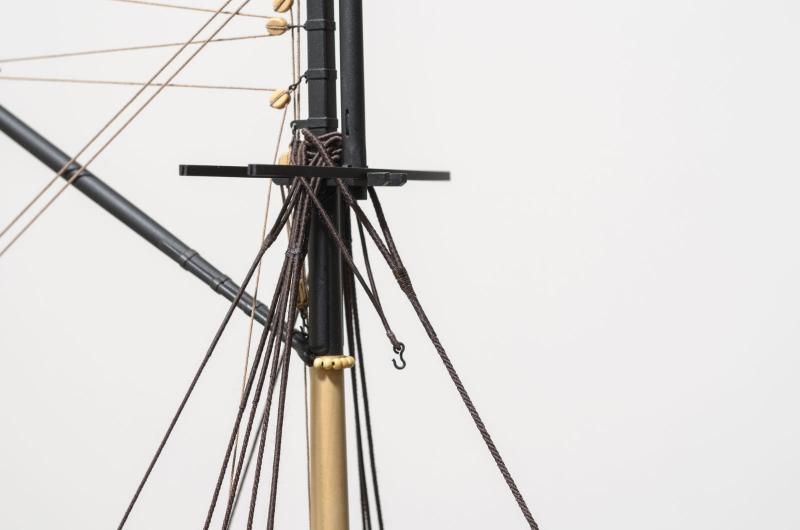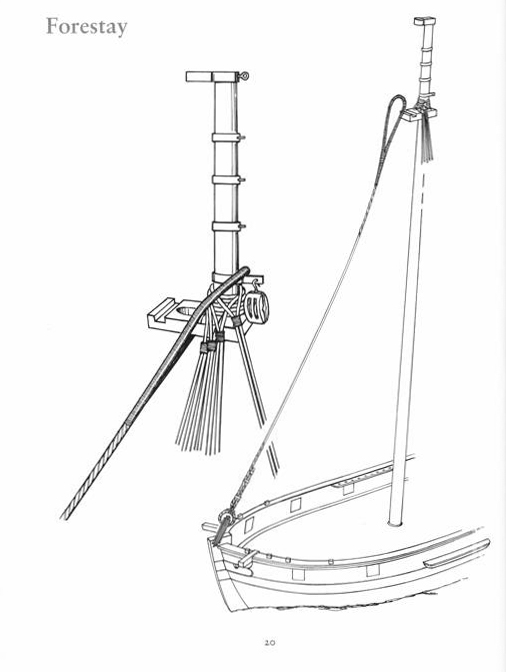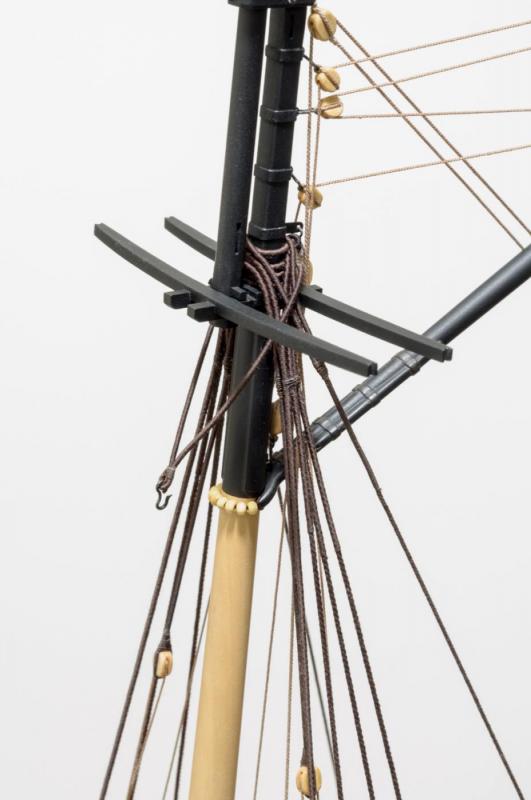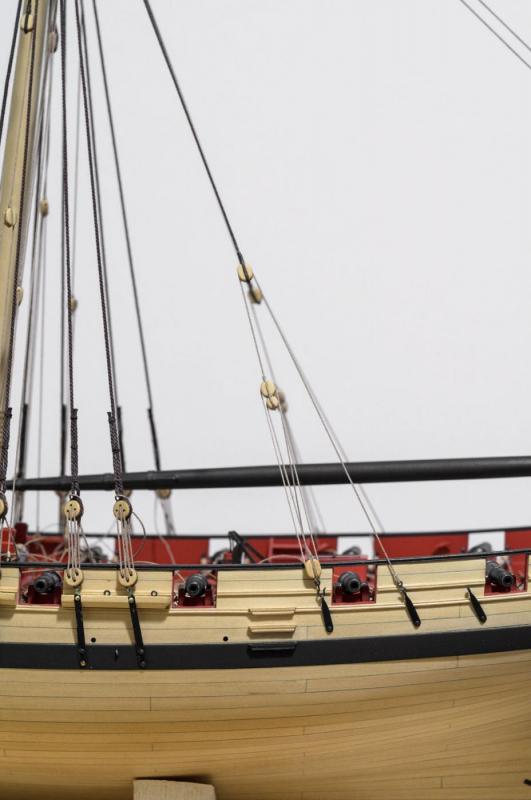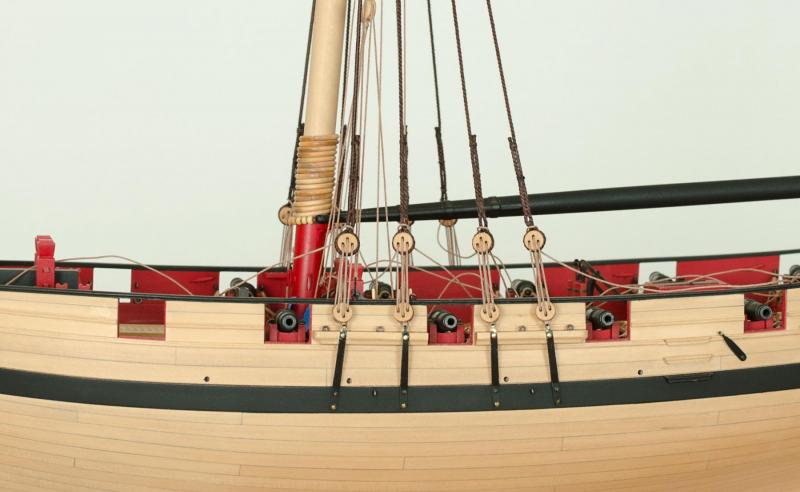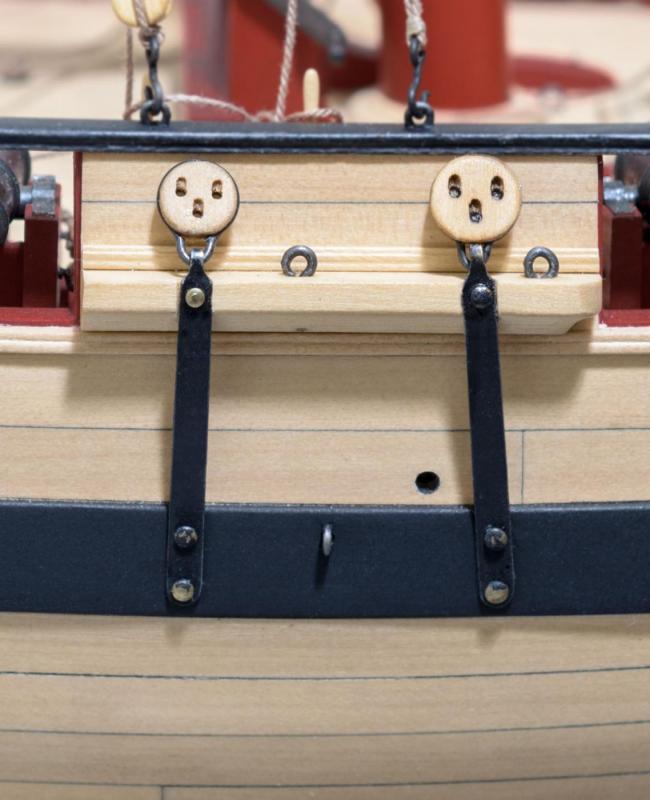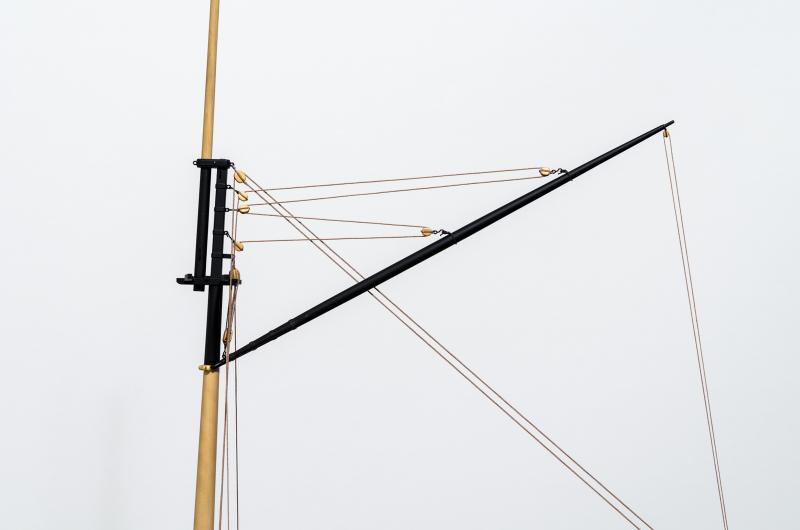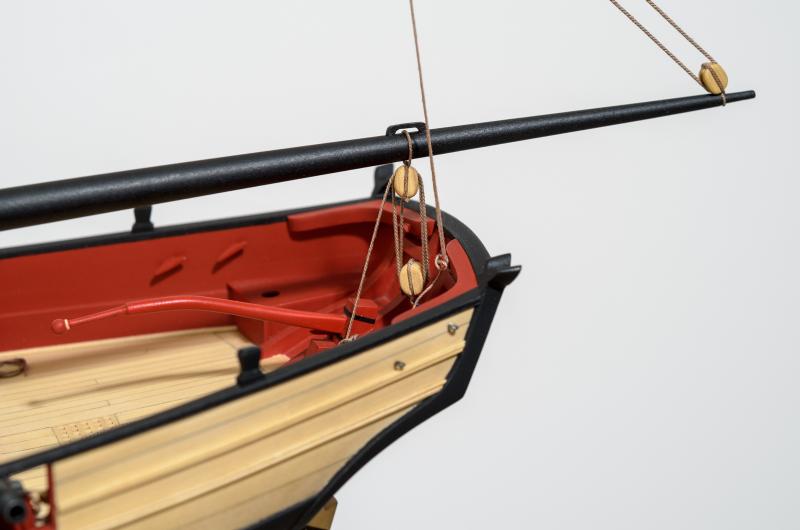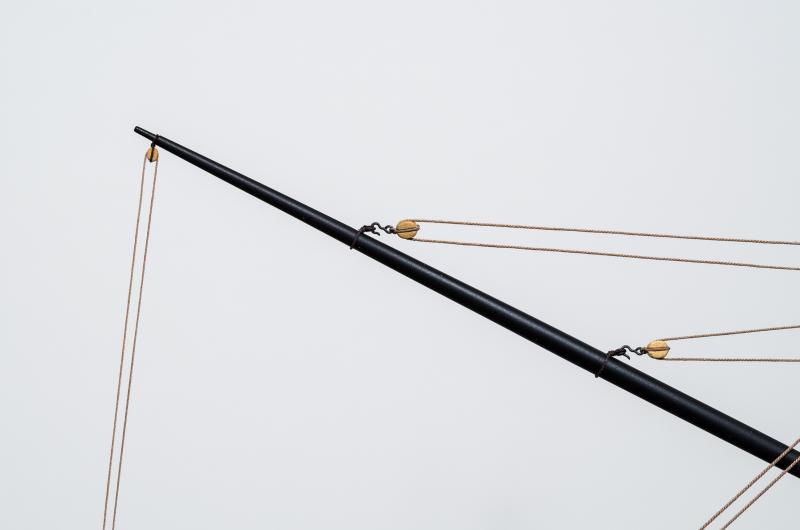-
Posts
1,197 -
Joined
-
Last visited
Content Type
Profiles
Forums
Gallery
Events
Everything posted by Stuntflyer
-
Thanks, druxey! It's doesn't hurt to have good material to work with. Using Chuck's rope certainly helped in making the work go a whole lot easier. Mike
- 452 replies
-
- cheerful
- Syren Ship Model Company
-
(and 1 more)
Tagged with:
-
Hey guys, I apologize for redoing doing the last post three times. Still learning the new format. Mike
- 452 replies
-
- cheerful
- Syren Ship Model Company
-
(and 1 more)
Tagged with:
-
I've been tidying up a bit lately. Managed to get some paint on the chainplates, which are now ready for weathering. I just need to decide what look to go for. Most of the rigging needed some tightening up as well. The two eyebolts that secure the bobstay to the hull where moved forward to prevent the bobstay from interfering with the anchor hoisting. The eyebolts are now 1 1/4" from the stem. The original holes where filled and re-painted. The two ladders that were apparently not glued down securely and knocked off during the rigging process are now on the deck. The thrill of the day, at least for me, was getting the starboard side ratlines completed. The shrouds where checked after every square knot and clove hitch was tightened to insure that there was no hourglass shape creeping in. I found this to be an very interesting process. I learned a lot and planning ahead definitely helps things go easier. Hopefully this is what ratlines are supposed to look like. . . Mike
- 452 replies
-
- cheerful
- Syren Ship Model Company
-
(and 1 more)
Tagged with:
-
Well done, Erik! If you want, as you do those final strakes on the upper belt, you can place a small block of wood on top of the bulkheads near the inside edge of the hull. This might help you get the clamp into a better angle. It also prevents any damage to the hull due to clamping directly onto it. Mike
-
I finished the Forestay today. The rope is .054 Brown served with 50wt thread. To thin out the splice as much as possible I decided to include only one served end into the splice. To make this work I had to measure exactly how much length of serving would be needed. That turned out to be 4". The serving adds quite a bit to the thickness of the splice, so doing it this way reduces the overall thickness of the splice considerably. Here you can see where the serving ends (as indicated by the green arrow) and where the beveled cut rope was glued to the served side. As you can see, I didn't tighten anything up yet. The gang of ropes turned out to be a bit too tight once the Forestay was added and it's crushing the ropes below it. I'm thinking that perhaps I should move it up as shown in "Rigging Fore-and-Aft Craft" Lennarth Peterson: The British Naval Cutter Mike
- 452 replies
-
- cheerful
- Syren Ship Model Company
-
(and 1 more)
Tagged with:
-
The sling is now completed. It is made from Chuck's .035 Dark Brown rope and served its entire length with 50wt thread. Adding the thimble and seizing it was straight forward. The rope length was measured so the bottom of the hook falls about 3/16" below the gaff. A small eye was seized to one end of the rope, while being careful to maintain the proper rope length. This was all done off the ship. After feeding the sling around the mast, the remaining end was inserted through the eye and the last intertwined eye was made when the sling was in position. Seizing the last eye proved to be quite tricky. The sling is short, so holding onto it while seizing the eye proved to be awkward. It took several tries before I managed to do it. Mike
- 452 replies
-
- cheerful
- Syren Ship Model Company
-
(and 1 more)
Tagged with:
-
Greg, Actually, I think it was designed as a first time scratch build with some laser cut parts available for those that want them. The plan is highly detailed and as long as you follow the monograph or Chuck's build, then things can come together amazing well. So I would say that it is a very well designed ship. Mike
-
Dharma66, Steve, Chuck's build is definitely a hard act to follow. I'm amazed at just how much there is to know to even approach what he does so well. He is definitely a good man to have around. Mike
- 452 replies
-
- cheerful
- Syren Ship Model Company
-
(and 1 more)
Tagged with:
-
Thank you all for the kind words, comments and "Likes". After a week off vacationing, I'm finally getting around to building again. I finished the lower backstay and tackle today. Next up is the sling and then the mainstay. After that I'm going to clean up some of the scratched paint work. At least that's the plan. Mike
- 452 replies
-
- cheerful
- Syren Ship Model Company
-
(and 1 more)
Tagged with:
-
Russ: I tend to agree with you. Things are moving around a bit, as you say. I'm going to wait until after the lower backstays and mainstay are completed before I start to tighten things up. Druxey: Chuck's method does seem to work nicely once one gets the hang of it. Like everything here there is some learning to do. Next time I would like to try your method as I'm sure you have worked out all of the kinks. Mike
- 452 replies
-
- cheerful
- Syren Ship Model Company
-
(and 1 more)
Tagged with:
-
Hello! I managed to complete the shrouds today. "Turning in" the deadeyes required a few do overs and a test of my patience. The lanyards are not secured. I like to go back and look at things when my mind is fresh before committing. Next, I want to clean up the chainplates which is something I try not to look at since right now they look like c***. Mike
- 452 replies
-
- cheerful
- Syren Ship Model Company
-
(and 1 more)
Tagged with:
-

Echo by davec - FINISHED - cross-section
Stuntflyer replied to davec's topic in - Build logs for subjects built 1751 - 1800
I used a lot of clear dope when I was building airplanes and still have a few gallons on the shelf. Aero Gloss Clear "Nitrate" Dope was known to yellow over time. On the other hand, Sig Mfg had a product called "Butyrate" Clear Dope which won't yellow over time or shrink like some "Super Coat " clear dopes. It's still available over the internet. Mike- 127 replies
-
Thanks, Chuck! I'm hoping to have all of the deadeyes replaced sometime tomorrow. Will send you a PM. Mike
- 1,051 replies
-
- cheerful
- Syren Ship Model Company
-
(and 1 more)
Tagged with:
-
No problem, Chuck. Hopefully sometime this coming week if you have the time. Mike
- 1,051 replies
-
- cheerful
- Syren Ship Model Company
-
(and 1 more)
Tagged with:
-
Chuck, If by Corel Photo, you mean Corel Photo Paint, this plugin might fix the lens issues that you are having. I believe it works as a stand alone program or as a plugin. Of course, there is always Photoshop where its "Camera Raw" plugin can be set up to do it automatically. http://epaperpress.com/ptlens/ Mike
- 1,051 replies
-
- cheerful
- Syren Ship Model Company
-
(and 1 more)
Tagged with:
-
Best wishes to everyone for a Healthy and Happy New Year! The Cheerful plans show 5.5mm deadeyes for the chainplates and shrouds. My eyes must have been playing tricks on me when I first measured them at 5mm. Now that I am trying to install the shrouds, I can see that they are too small and somewhat hard to work with. Chuck has suggested that I could replace them with 6mm ones that would be easier to rig. That's what I'm in the process of doing now. Hey! It doesn't get more exciting than this. A while back when I was finishing up the paint work on the wales, I had decided not to paint and weather the chainplates. Something told me to hold off a bit or maybe I was just being lazy. Now that I'm scratching them up, I'm glad I waited. With the first 6mm deadeye installed you can easily see the size difference. Mike
- 452 replies
-
- cheerful
- Syren Ship Model Company
-
(and 1 more)
Tagged with:
-
Thank you all for the comments and "Likes". . . It certainly has been an interesting journey so far. Shrouds are coming soon. Speaking of which, I'm not clear on what "turning in" means exactly. I searched and found only limited information. Does anyone have something more descriptive? It would be greatly appreciated and hopefully helpful to others as well. Mike
- 452 replies
-
- cheerful
- Syren Ship Model Company
-
(and 1 more)
Tagged with:
-
When I first started rigging Cheerful It all seemed a bit overwhelming and I wasn't having all that much fun, honestly. I had no real plan for completing the Peak Halliard so I decided to concentrate on one task at a time and try not to think about all that had to be done. Making a decent looking hook, for example, required a lot more effort than I originally thought. I spent the whole day trying different methods and threw out a lot of wire. Making more wouldn't hurt, but the process did get easier and I'm happy with the results overall. Taking things really slow has made the rigging process a whole lot more enjoyable.
- 452 replies
-
- cheerful
- Syren Ship Model Company
-
(and 1 more)
Tagged with:
About us
Modelshipworld - Advancing Ship Modeling through Research
SSL Secured
Your security is important for us so this Website is SSL-Secured
NRG Mailing Address
Nautical Research Guild
237 South Lincoln Street
Westmont IL, 60559-1917
Model Ship World ® and the MSW logo are Registered Trademarks, and belong to the Nautical Research Guild (United States Patent and Trademark Office: No. 6,929,264 & No. 6,929,274, registered Dec. 20, 2022)
Helpful Links
About the NRG
If you enjoy building ship models that are historically accurate as well as beautiful, then The Nautical Research Guild (NRG) is just right for you.
The Guild is a non-profit educational organization whose mission is to “Advance Ship Modeling Through Research”. We provide support to our members in their efforts to raise the quality of their model ships.
The Nautical Research Guild has published our world-renowned quarterly magazine, The Nautical Research Journal, since 1955. The pages of the Journal are full of articles by accomplished ship modelers who show you how they create those exquisite details on their models, and by maritime historians who show you the correct details to build. The Journal is available in both print and digital editions. Go to the NRG web site (www.thenrg.org) to download a complimentary digital copy of the Journal. The NRG also publishes plan sets, books and compilations of back issues of the Journal and the former Ships in Scale and Model Ship Builder magazines.



